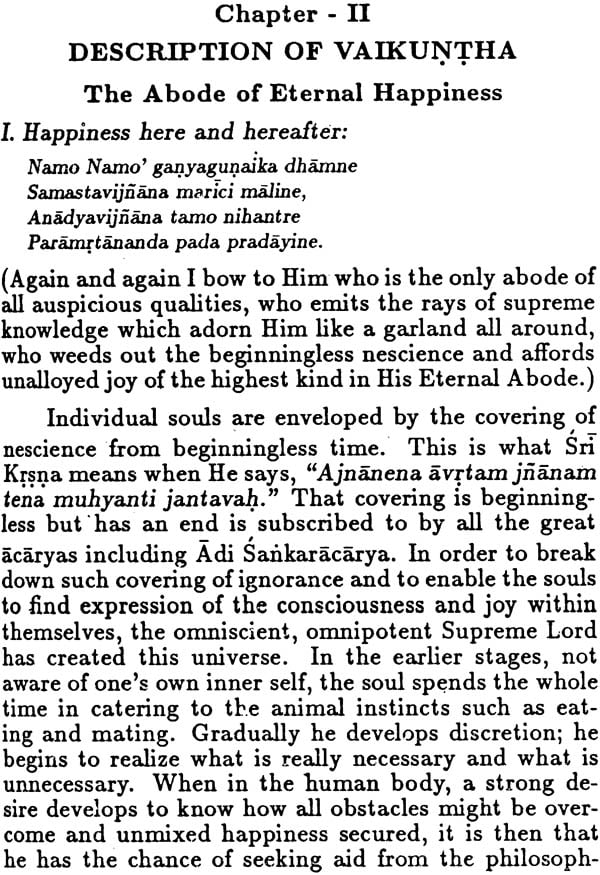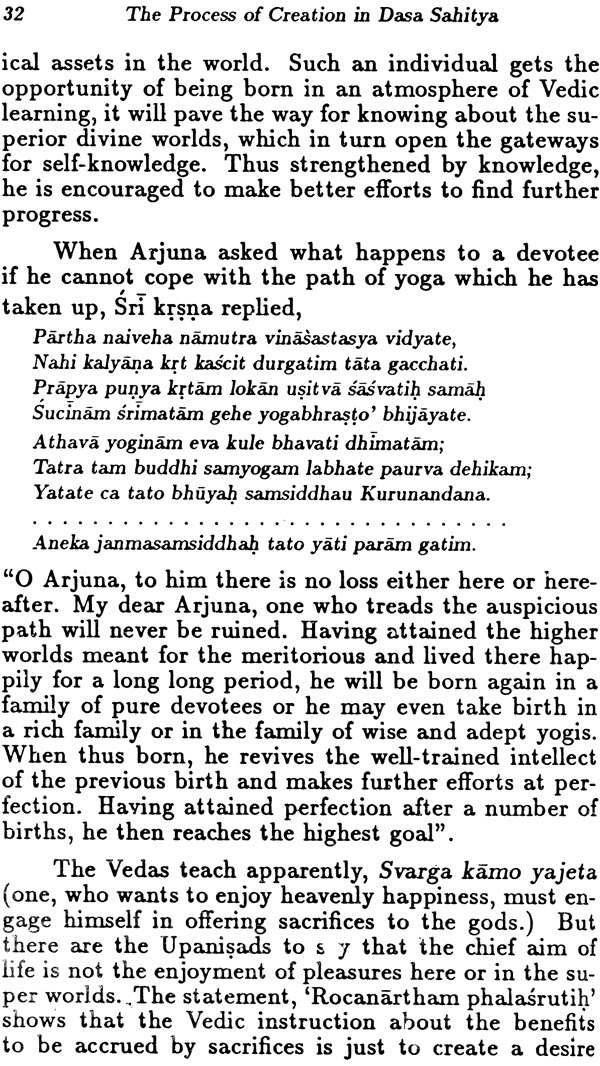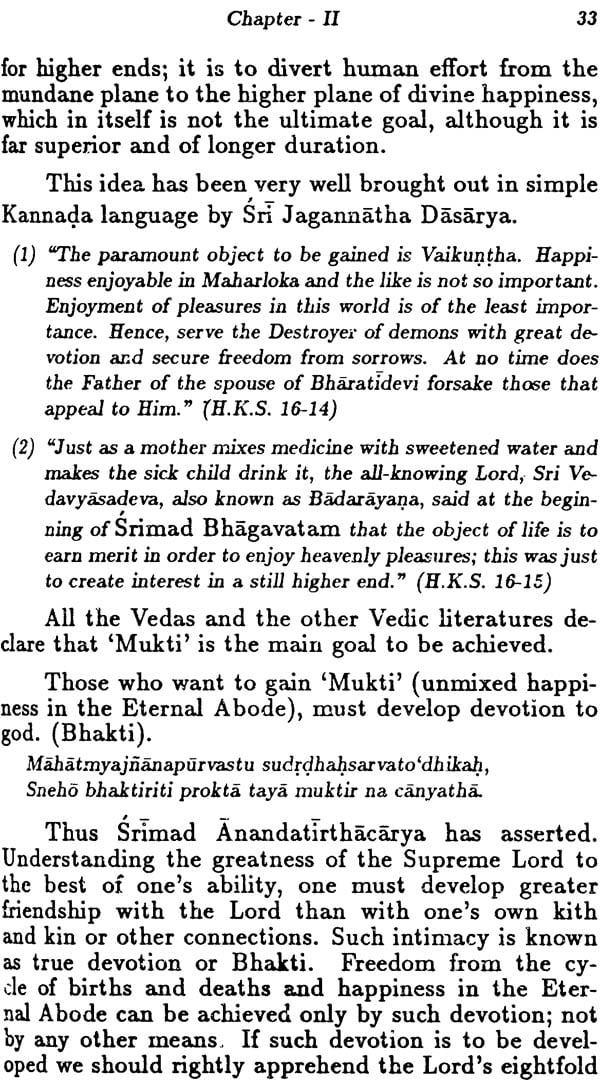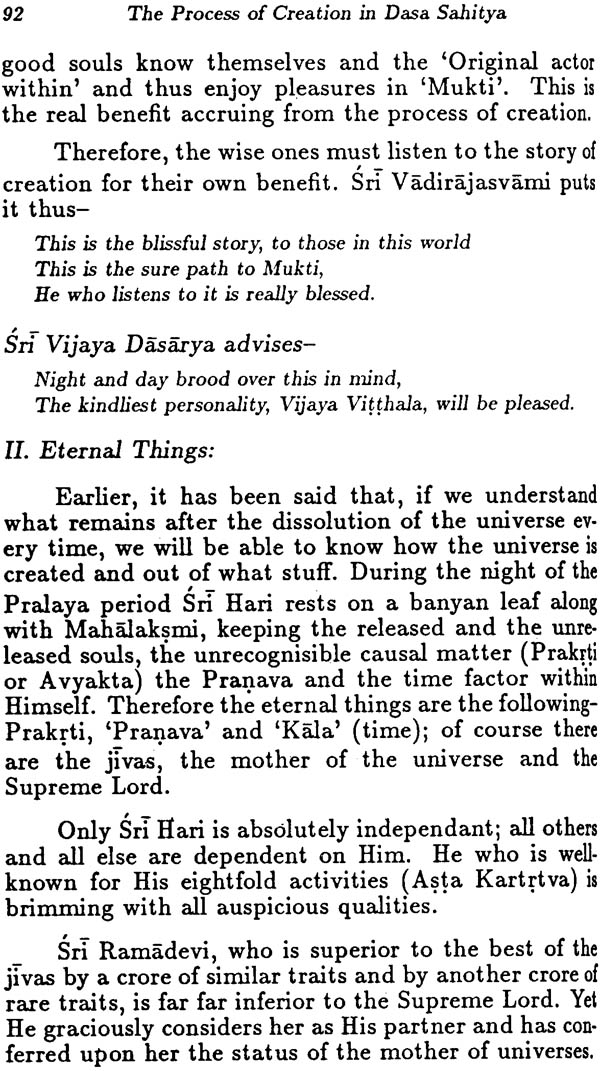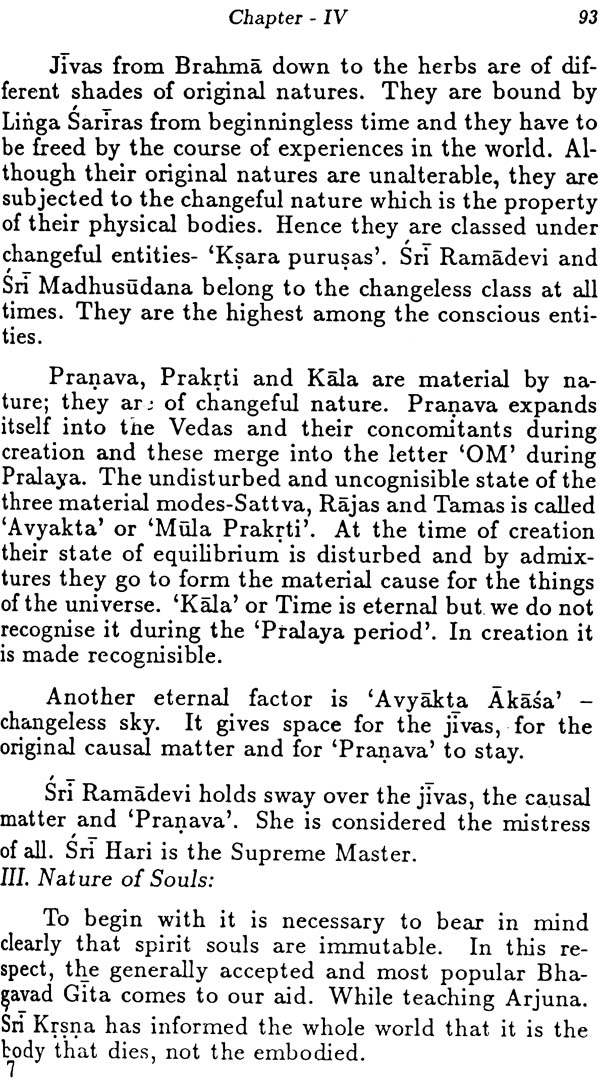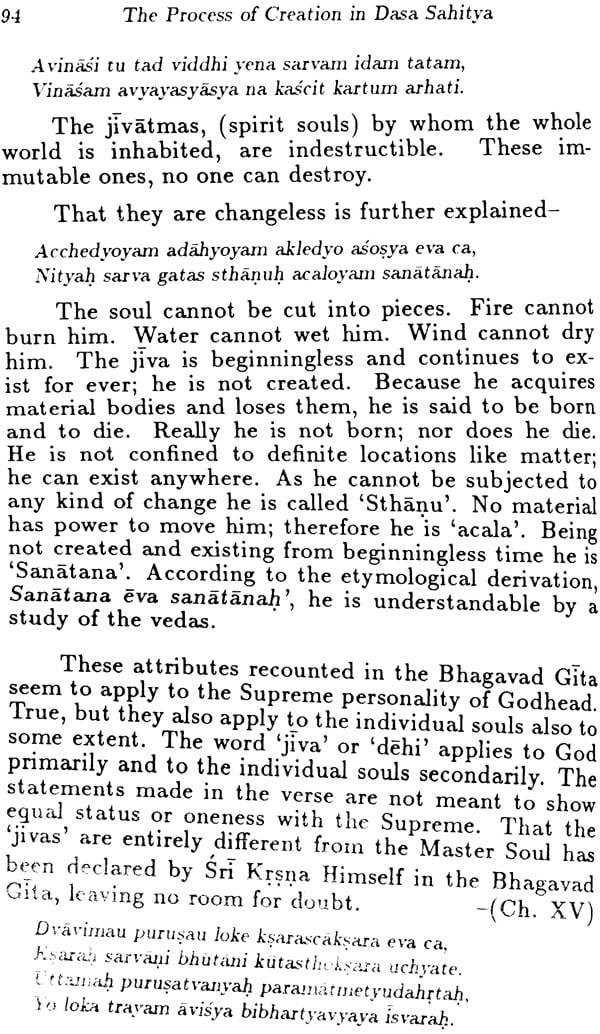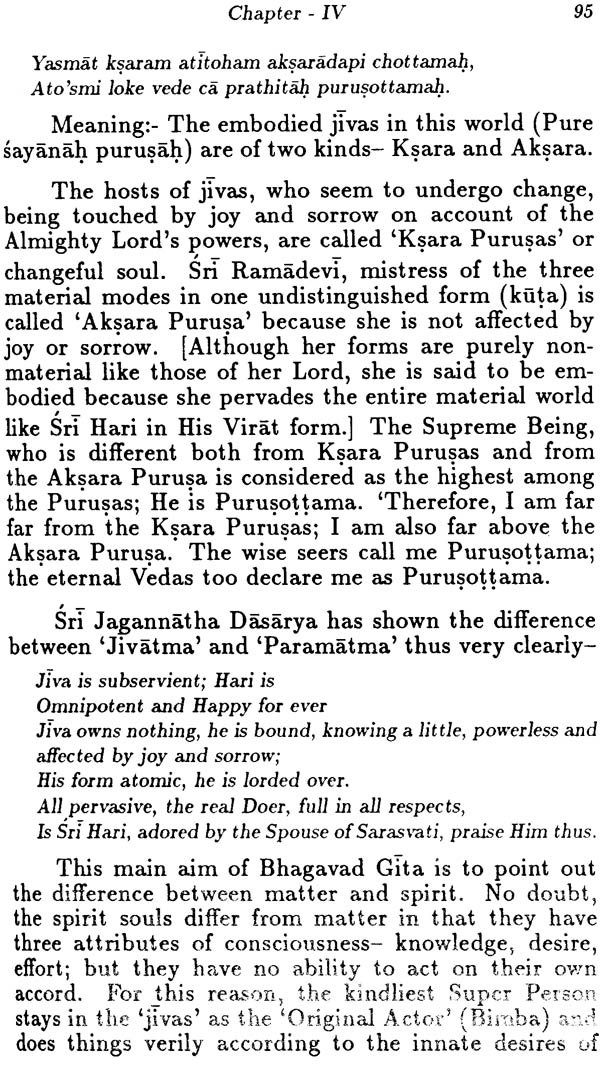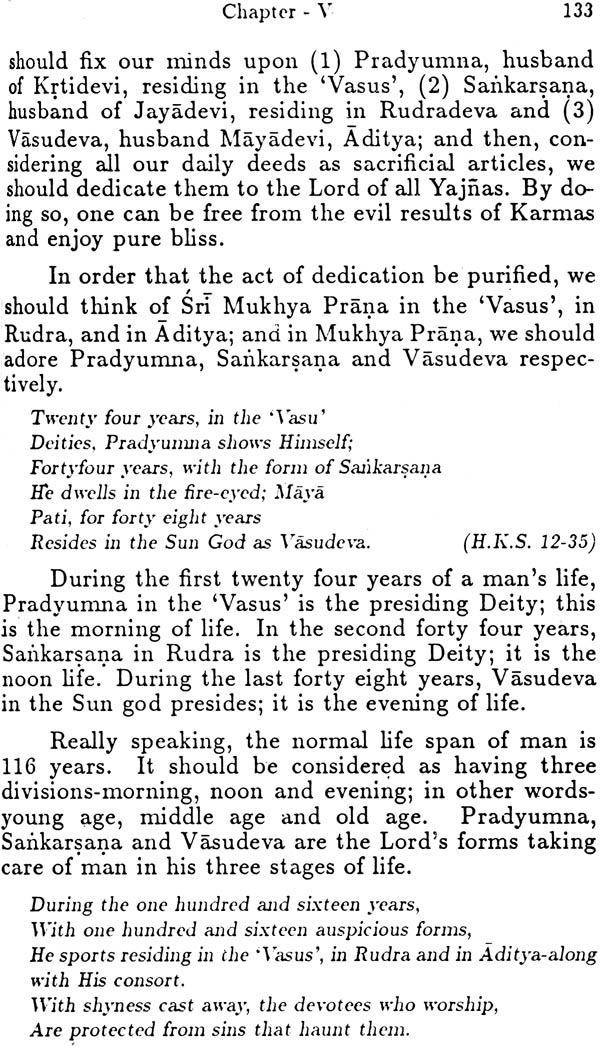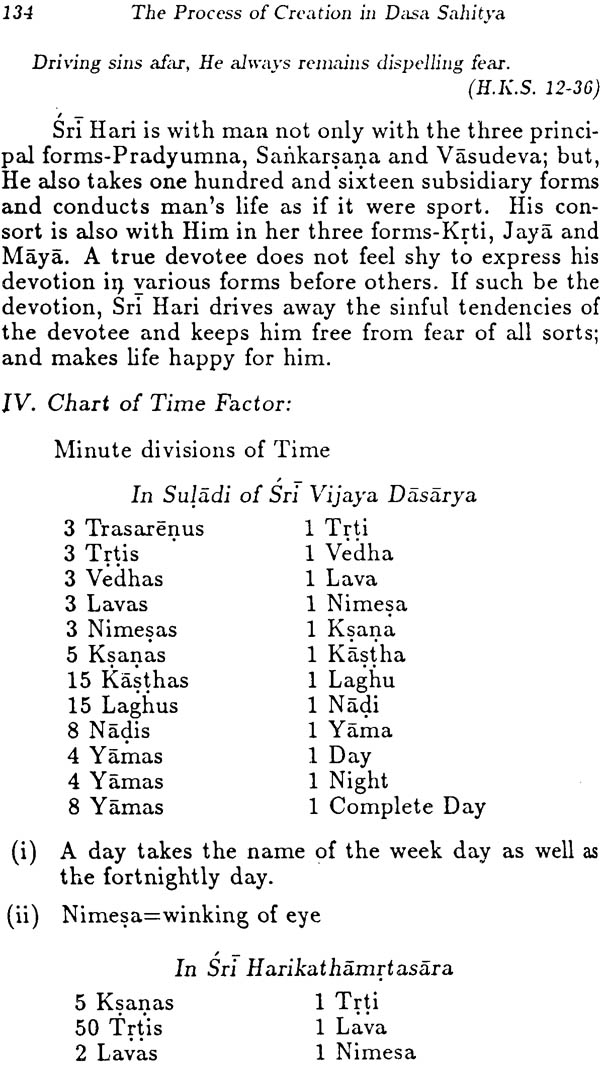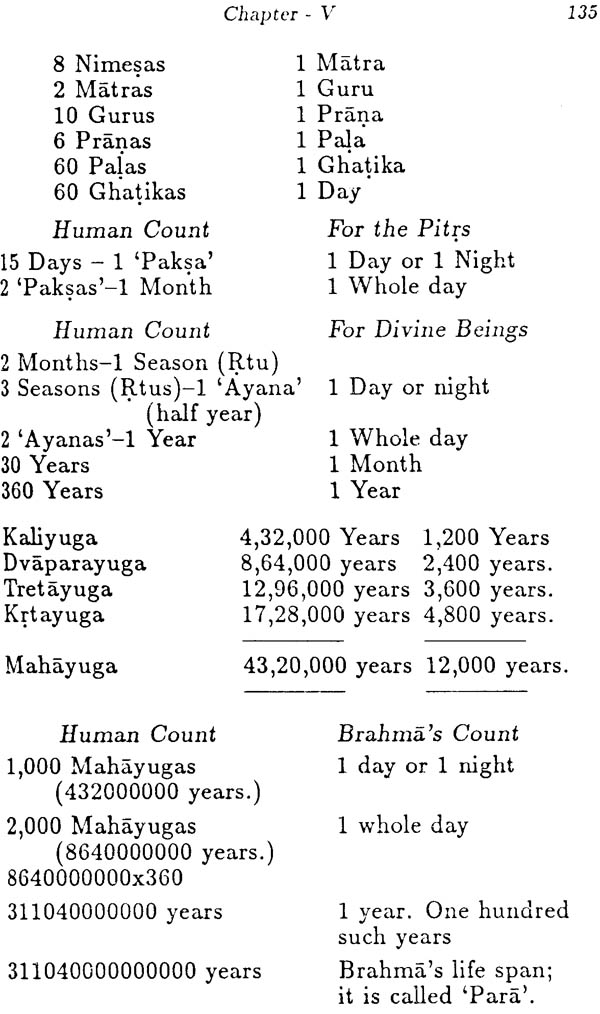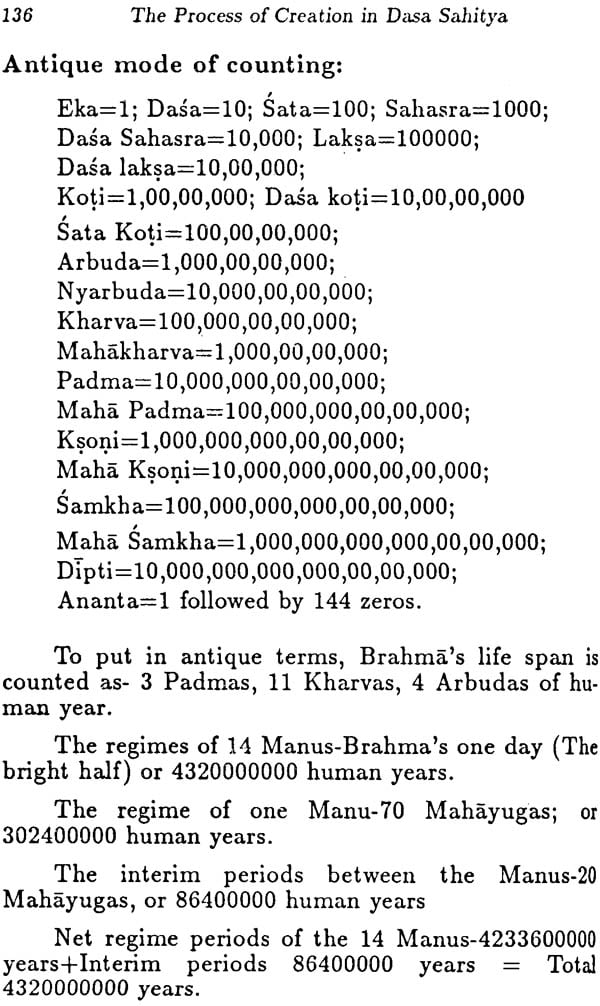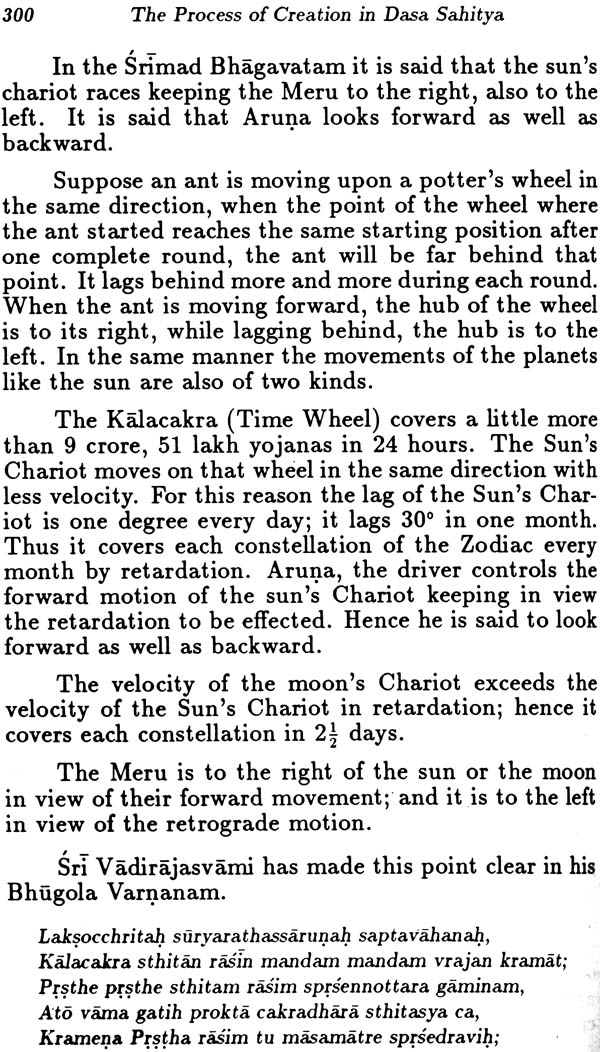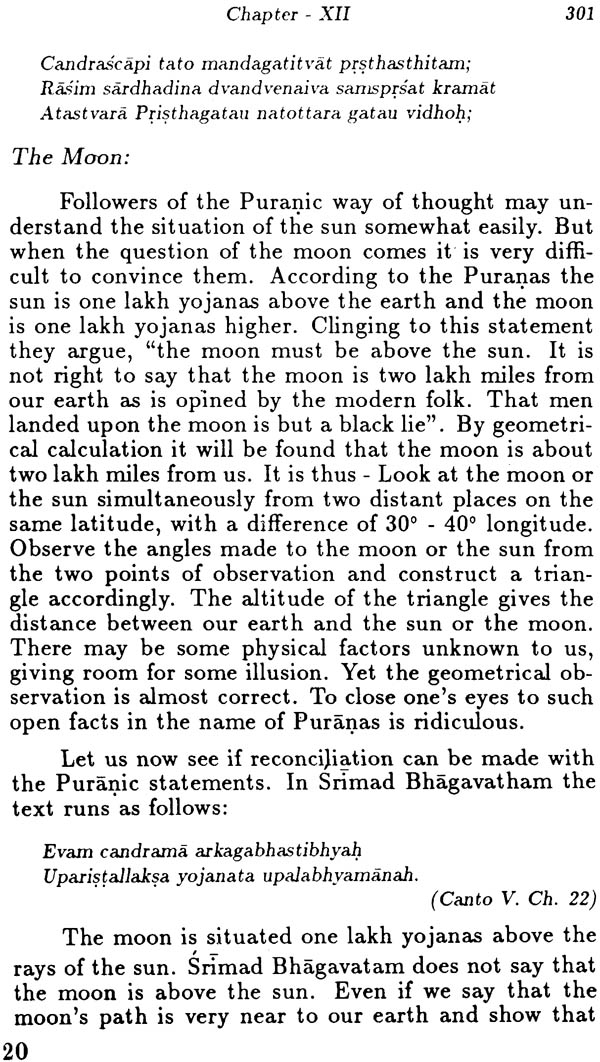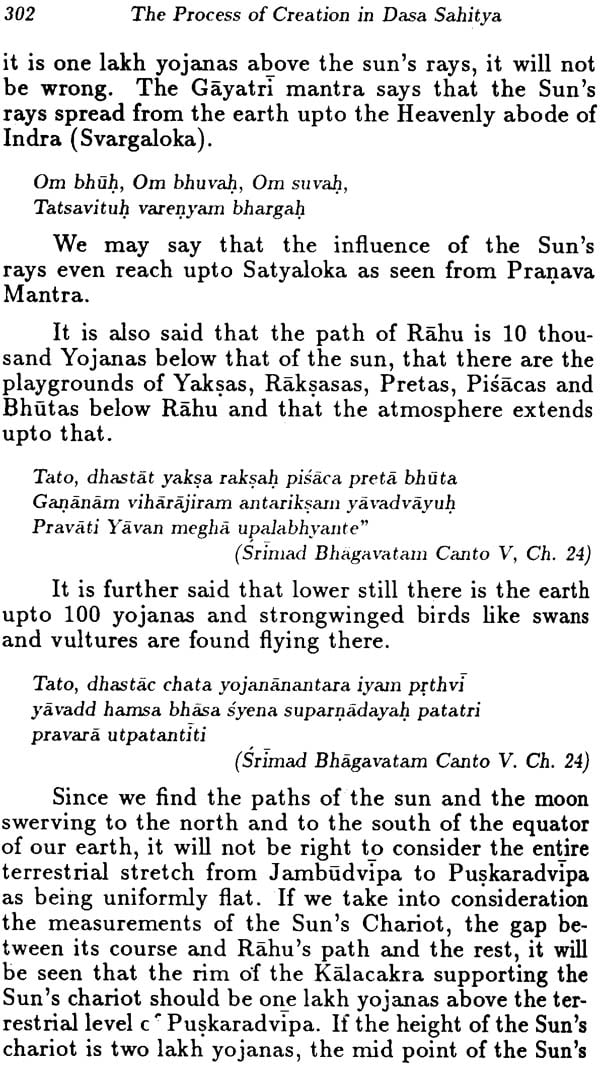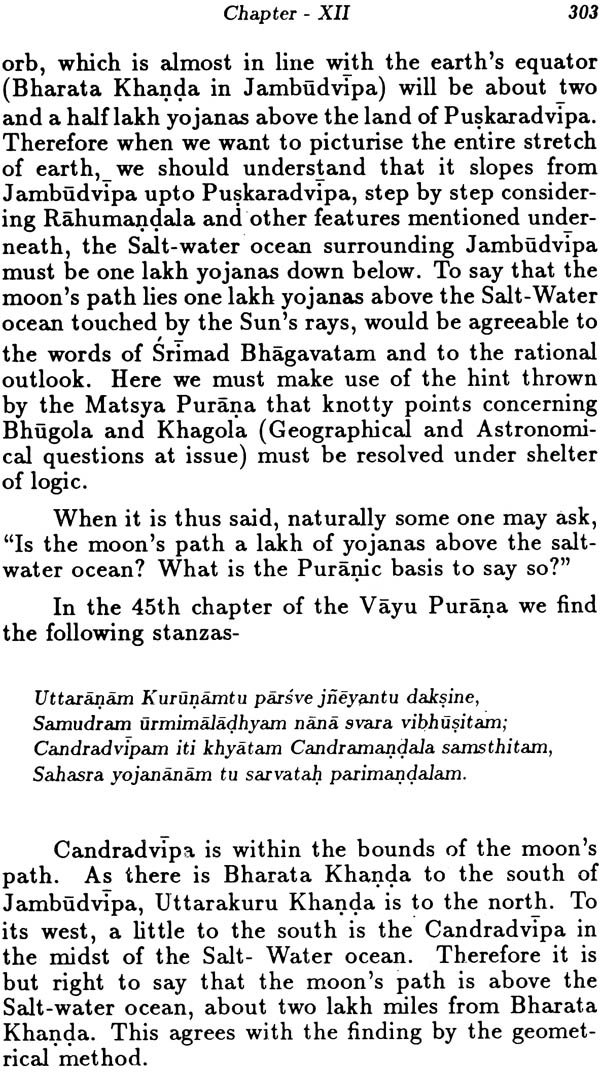
The Process of Creation In Dasa Sahitya
Book Specification
| Item Code: | NAG153 |
| Author: | V. Badarayana Murthy |
| Publisher: | Tirumala Tirupati Devasthanams, Tirupati |
| Language: | English |
| Edition: | 1999 |
| Pages: | 319 |
| Cover: | Paperback |
| Other Details | 8.5 inch X 5.5 inch |
| Weight | 290 gm |
Book Description
The saint composers of Karnataka, popularly known as Karnataka Haridasas, - have composed thousands of lyrics praising the glory of Lord Sri Venkateswara, thus furthering the Bhakti movement.
Through their lyrics in simple Kannada, the Haridasas have succeeded in bringing within the reach of the common man, the great secrets of Vedas and Puranas.
The mystery of creation as revealed in the scriptures, found its place in the compositions of Karnataka Haridasas. Basing on these Haridasa Krtis, which are regarded as lyrical commentaries on the scriptures, the author, Sri V. Badarayana Murthy has done an excellent work of producing in prose the present “Process of Creation in Dasa Sahitya”.
We believe that the reader will be benefited by this valuable work, which throws light on the puranic concept of creation.
I. The Need for Right Understanding:
The aim of every one is to secure happiness. But we cannot bag all the happiness that we aspire for. When we are making efforts to win or when we are in the act of enjoying happiness, we find a net-work of affliction all around us. If one asks why it is so, we get different answeres from different persons. Among them, the more intelligent ones have attempted to proclaim to the world their verdicts. Some believe in the existence of God; yet they attach more importance to the will of man. “Where there is a will, there is a way”. “Man is the architect of his own fortune.” “God helps those who help themselves.” These are some of the well-known adages. Some others say that man’s will is all in all-they are atheists. Hanging on to the Darwinian theory of evolution, they ridicule the idea of separate soul or God and tell us that all that we see in this world is only an effect of material reactions. For them the aim of life is indefinite. Their only object is to know more and more about the world and to secure more and more happiness. They say that man has somehow come to live in the midst of natural surroundings; and that, by bringing nature under control, it is possible to make life happier. This is their religion. Since such ideas of the western civilization have invaded all parts of the world, people are chewing the same end and are groping in the dark.
There are also those who shape their views according to the preachings of religions teachers-they are theists. They believe in the existence of God who has created this world and is ordaining its activities. Their belief is, “God is the protector. Sins land us in sorrow. Good deeds bring us happiness and joy. If we surrender ourselves to the mercy of the creator and pray to Him, He pardons our sins and saves us. Ultimately He takes us into His Eternal Abode and favours us with perpetual happiness.
The theist and atheist ways run in opposite directions. It is not right to decided hastily which is right and which is wrong.
Every human being has the right to investigate thoroughly the modes followed by religious or other thinkers and to form one’s own judgement. It is not conducive to bow down like sheep and accept every word of the spiritual master as authoritative. Of course, there may be certain exceptional cases when such acceptance will be found necessary. Teachers and elders who really wish to found necessary. Teachers and elders who really wish to guide and do good give scope for independent judgement. Even after imparting such valuable knowledge as found in the Bhagavad Gita, the ideal teacher Sri Krsna said to Arjuna, “Yathecchasi tatha kuru” (You have the right to choose before you act.) Other teachers will do well to emulate this teacher of teachers.
II. Ways of Gaining Knowledge:
Not accepting that knowledge can be gained in different ways, it is not right that the modern-minded people should consider as true only what they see or what they find by their experimental methods. It is too much to think that everything can be understood by the ability of human intellect itself.
If we can appreciate reality as it is, we can see that Knowledge comes to us in different ways. The ancient rsis (Sages of high order) were great souls who visualized the Vedas; they are called ‘Seers’ of Truth in the form of ‘mantras’. Great sages like Valmiki were those who were blessed with divine vision and wrote what they visualized on their mental screens, in the form of epics from the earliest times. Sitting at the lotus feet of a spiritual master reverentially and receiving instruction and following the same has been the best way of gaining correct Knowledge. To some, Knowledge flashes all of a sudden although they may fail to get at it by any amount of effort. We have heard of many such instances. Ramanujam, the mathematical prodigy, belongs to this group of knowers. Also, he has said that the deity ‘Namagiriyamma’ used to provide him with solutions to the most difficult mathematical problems during his dreams. All are aware of another common way of gaining knowledge-it is by hard study of books. But the modernists’ stand is to brush aside all other methods and to make efforts to know everything only by the experimental method.
These people who are aware of the loopholes in Darwin’s Theory of Evolution still want to think that human Knowledge is growing also with civilization. This is only self-deception.
If the followers of theism are prone to become a prey to blind faith, we will be constrained to say that the followers of atheism are those who go in quest of knowledge like the lame or the blind. Even when one can clearly see the orderliness and organized beauty in the materials and activities of the universe, is it not sheer blindness to say that all this is the effect of insentient matter working within itself somehow? (Big bang theory!). Striding with faulty steps and condemning as false tomorrow what is held as true today-crawling thus in the path of Knowledge, is it not lameness?
Not being properly acquainted with Knowledge stored in religious texts, it is not wisdom to seek Knowledge only in the new way.
There is a proverb in Sanskrit which reads thus-Siddhamannam parityajya bhiksam atati durmatih. It means, the fool kicks the dish served with delicious food accompanied by words of welcome and goes to beg for food. Another proverb in Kannada, almost equivalent to it, is, “Like selling away the tame mulching cow and buying another that kicks.” When religious texts are treasures of truly scientific Knowledge it is not wisdom to give them up and try to build the structure of Knowledge afresh.
The wise ones should reasonably understand all that the modern scientists have discovered and are going to discover and compare them with the truths propounded in ancient texts; and thus they should add to their Knowledge gainfully. Supporting this view, Swami Chidbhavananda has said in his book, Facets of Brahman Thus
“Knowing the truth about a phenomenon is the scope of science. Knowing the truth in its entirety is the scope of philosophy. Both the enquiries are at the point of meeting. It may therefore be stated that particularized philosophy is science and generalized science is philosophy.”
Religious texts generally answer the following cardinal questions-‘Who created this universe? In what ways are we connected with it? What made us to be born here? For what purpose?
Naturally, the answers to the above questions may be varied on account of time and clime. However, any unbiased thinker will discern that the Haridasas of Karnataka have expressed facts in the most satisfactory manner. Therefore, it is the object of this treatise to describe the process of creation and the true means of achieving happiness as described in the devotional literature of the Haridasas of Karnataka, backed by other Vedic literatures.
